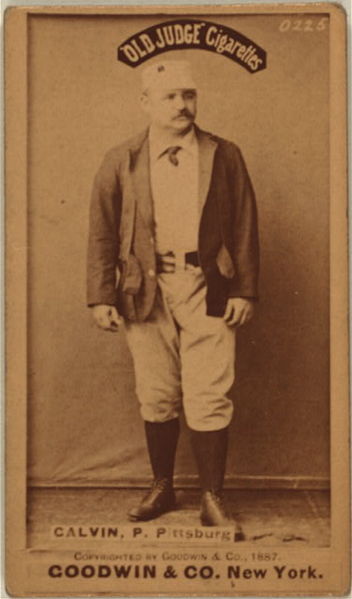Monkey Business

In 2005, former big league slugger Jose Canseco released the book “Juiced,” detailing his account of the use of performance enhancing drugs in baseball. Canseco accused a half-dozen former teammates of using the same drugs he had, naming, among others, Mark McGwire. Five years later, McGwire would admit to taking steroids as early as 1989.
McGwire was a century behind the times.
Charles Edward Brown-Sequard was a Mauritian-born, French-trained doctor in the mid- to late-1800s. While best known for a syndrome in which a spinal cord injury results in paralysis and impaired motor function, Brown-Sequard was interested in something else: monkey testicles. In 1889, Brown-Sequard published a paper (pdf) titled “The Effects Produced on Man by the Subcutaneous Injections of a Liquid Obtained from the Testicles of Animals,” investigating whether the hormones could help humans become stronger and more virile. Specifically, Brown-Sequard believed (and reported) that, eating an extract from monkey testicles could result in improved performance in the bedroom.
Almost immediately, people were using the soon-called “Brown-Sequard elixir” as a muscle-building supplement. An August 23, 1889 article in the New York Times (pdf) titled “Doctors Who Disagree” discussed how the elixir was dividing the medical community; some believed that the testicle extract was helping reverse the aging process while others refused to buy into what they saw as nothing more than snake oil. (The latter doctors were right; the elixir was, at best, a placebo.)
Among those of the elixir’s early users was a man named James Galvin, better known by his nickname, “Pud.” Pud Galvin (pictured above) was a pitcher for the Pittsburgh Alleghenys, a team which would, two years later, change their name to the Pittsburgh Pirates. Even in an era defined by workhorse starting pitchers, Galvin was a standard-bearer. His just over 6,000 innings pitched and 646 complete games are second all-time (behind Cy Young in both cases), and he is the only pitcher in Major League history with 70 or more complete games in two or more seasons (72 in 1883 and 71 a year later). But all this work took a toll on the short, stocky pitcher.
According to NPR, Galvin turned to modern medicine for help, in the form of Brown-Sequard elixir, thereby introducing foreign hormones into his body. He did so openly; the Washington Post even used his on-field performance to extol the virtues of the elixir, stating “if there still be doubting Thomases who concede no virtue of the elixir, they are respectfully referred to Galvin’s record in yesterday’s Boston-Pittsburgh game. It is the best proof yet furnished of the value of the discovery.” Given this, one shouldn’t be surprised to learn that Galvin was never punished for his attempts to use drugs to enhance his performance. In fact, in 1965, he was elected to the Hall of Fame.
Bonus fact: Pittsburgh’s baseball team was named the Alleghenys after the Allegheny River and the city of Allegheny, the town across that river from Pittsburgh, in which they actually played. Pittsburgh annexed in Allegheny in 1907, but the annexation was controversial. Prior to 1906, Pennsylvania state law allowed for municipalities to combine, but only if a majority of voters in both towns approved such a merger/annexation. But in 1906, the state legislature changed the law, requiring one collective vote encompassing voters from both towns; if a majority of this combined group voted for the combination, the merger could go forward. As Pittsburgh’s population topped Allegheny’s 2:1, the vote to combine passed easily, even though most Allegheny citizens were against it, citing Pittsburgh’s municipal debt and Allegheny’s relative prosperity. A group of Allegheny citizens sued to prevent the annexation, even reaching the U.S. Supreme Court. But the court ruled in favor of Pittsburgh, and the two cities combined peaceably.
From the Archives: High and Outside: Is LSD a performance enhancing drug? Probably not, but don’t tell that to former pitcher Dock Ellis.
Related: A book on the history of Allegheny City. Also, “Ghosts in the Gallery at Cooperstown: Sixteen Forgotten Members of the Hall of Fame” by David Fleitz. Doesn’t include Galvin, so with the above, it’s 17!
